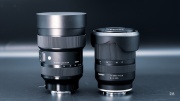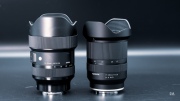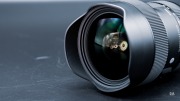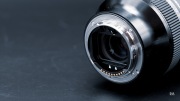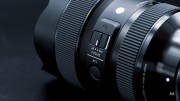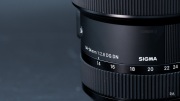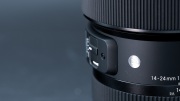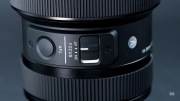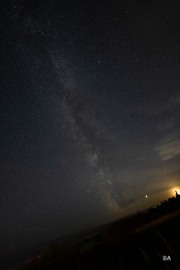Sigma 14-24mm F2.8 DC DN ART Review
Dustin Abbott
October 21st, 2019
After dipping their toes in the Sony FE (full frame mirrorless) pool last year with retooled versions of some of their popular ART series lenses (essentially lenses with built-in adapters to make them compatible with Sony), Sigma has arrived on the scene in the second half of 2019 with some actual fresh development specifically for FE (and Leica L-mount). In 2019, however, all of that changes, and Sigma is rolling out multiple dedicated, freshly designed lenses for Sony FE. The first I reviewed was the little 45mm prime lens. The second of these is one I’ve been personally excited about – a brand new FE (and Leica L) version of what I thought was one of Sigma’s best zooms – the 14-24mm F2.8 ART. The new Sigma 14-24mm F2.8 DG DN ART is more compact, lighter, but also very nicely made. The Sigma 14-24mm F2.8 DN is a completely new lens with a different size and optical formula than the DSLR version. This will undoubtedly cause some confusion for buyers as Sigma’s bid to get extended mileage out of some of their existing lenses in 2018 may have a short term effect of some buyers not investing in a lens like this one out of fear that it is just a retooled DSLR lens. But if that does occur, it’s a shame, as the 14-24DN (as we’ll call it for brevity) is the kind of the lens that we’ve wanted Sigma to make for mirrorless. I’ve had a chance to review the 14-24DN not only on my Sony a7RIII but also on the new 61MP Sony a7R IV that I’m concurrently reviewing, so I’ve had a chance to really press the lens to the optical limits…and it has done just fine!
I was a big fan of the original 14-24mm F2.8 ART (which I reviewed in Canon EF mount). It was well built, had great optical punch, and obviously has an amazing focal length. All of those things are still true here, and having a wide-angle zoom lens that competently goes from 14mm (incredibly wide):
to 24mm (moderately wide):
…is extremely useful. It gives you a wide variety of framing options, and dramatically expands the scope of what you can do with a wide angle lens. The truth of the matter is that 14mm is probably overkill for landscape purposes. 14mm is extremely wide on a 35mm body, and will often include so much foreground (and distance to the background) that images feel a little distant.
The sweet spot for most landscape photos is between 17-30mm, which the Sigma covers a fair bit of, but I’m not convinced you need a lens that goes to 14mm if your primary purpose is landscapes. But 14mm is far more valuable if your shooting needs includes interiors, city, or architecture. In many of these cases there simply isn’t room to back up further, and things like tall buildings, for example, are often very close when you are on street level (unlike mountains or many natural features for landscapes). The 14-24DN is a marvelous companion for shooting in the city, where 14mm is much more useful than the typical 16-17mm that other zoom lenses start at:
This image would not have been nearly as compelling at 16 or 17mm. The Sigma’s 14mm was perfect, though.
Put simply, if you are a landscape shooter exclusively, you probably don’t need 14mm. Composing landscape images with focal lengths that wide involves a lot of skill, and it only works in certain situation. If interiors or architecture is part of your shooting priorities, however, then you definitely should strongly consider the 14-24DN over either the Sony 16-35mm F2.8 GM or the Tamron 17-28mm F2.8 RXD. Another alternative is the even-wider Sony 12-24mm F4G, but you do lose a stop of light (F2.8 vs F4), the Sigma is optically superior, and it costs less…so in many ways I think the Sigma 14-24DN hits a certain sweet spot for those who cover events, shoot weddings, or do real estate or city shooting.
There is one unfortunate reality in Sigma’s push into purpose-designed mirrorless lenses…the price is creeping up. I found the 45mm F2.8 DN a little overpriced relative to its performance, and partly due to market forces pushing the price of the original 14-24mm F2.8 ART down a bit along with Sigma simply pricing this lens higher, at the moment the 14-24DN costs $200 more at $1399 USD. And, while the original 35mm F1.4 ART was fairly aggressively priced at $899 USD at introduction, the new 35mm F1.2 ART DN costs a princely $1499.
I’ve noted that Sigma has been creeping up in its pricing over the past 3 years or so. This is partly because they can. They’ve done a great job of erasing the perception of being a bargain-bin alternative to first party lenses. Their early ART lenses were absolute values, though often they were plagued with some QC issues like inconsistent autofocus performance. Sigma continued to work to refine the lineup, though, increasing torque to the focus motors, adding some weather sealing, and generally improving tolerances in design. As confidence in their brand grew, they began to break the $1000 ceiling and now regularly price new releases well beyond it (as is evidenced by 2 of 3 of these new lenses).
On mirrorless they are undoubtedly emboldened by the high pricing of Sony (and Leica) lenses, but on Sony there is one significant obstacle – the Sony FE mount is one of the most “open-source” that we’ve seen in a long time. There’s a LOT of development on this platform beyond just Sony, and some of those other lens makers are really starting to hit their strides. There is one recent lens that is going to be a major obstacle for the 14-24DN, and that is the Tamron 17-28mm F2.8 RXD (you can find my review here). Tamron’s approach to Sony thus far has been to simplify the focal lengths in order to allow them to produce optically excellent lenses with compact size and reasonable prices. There’s no question that the 14-24DN is the more interesting/verstatile focal length, but the Tamron is 31mm shorter, weighs only 420g (375g less), and can use traditional filters in a reasonable 67mm filter size. Oh yeah, it also costs $899. That’s going to be very relevant, particularly to those with a tighter budget. The Sigma is an easy value relative to the 12-24G ($1699) or the 16-35GM ($2198); it’s a harder sell relative to the Tamron.
This pretty much demands that we consider the Tamron as a part of this review, though 17mm is not 14mm and the Sigma undoubtedly has the more desirable focal range. We’ll do our best to deliver a balanced, nuanced consideration of where the 14-24DN fits in the big scheme of the mirrorless world and whether it should rise to the top of your “must-have” list for a wide angle zoom.
Prefer toe watch your reviews? Check out my thorough video review here (which also includes video footage and timelapse shot with the 14-24DN):
Follow Me @ Patreon | My Newsletter | Instagram | Facebook | Twitter | Flickr | 500px
Sigma 14-24DN Build
I like what Sigma is doing thus far with the new DG DN lenses. What’s changed? You can either watch this video or read on…
In designing specifically for mirrorless (and it’s unique flange distance due to not having a mirror as a part of the camera), Sigma has been able to build a smaller, more compact lens while also purpose designing the focus system to take advantage of the different way that mirrorless cameras achieve focus. Unlike the previous “adapted FE” lenses, there isn’t a lot of space in the back of the lens where Sigma has employed essentially a custom MC-11 adapter in the design; the rear lens element goes all the way to the back of the lens.
Looking at both the front and the back of the lens reveals the truth that this is not a lens that can be traditionally filtered. It will require either an aftermarket front filter system or one can use gel filters in the rear filter holder. There’s also a template included in the box to help one to cut out appropriately sized gel filters. My experience with gel filters are that they are rarely as optically sound as better filters.The 14-24DN still isn’t what I would call a small lens, but it has reasonable size and weight when one considers the challenging focal range/aperture combination. The 14-24DN is 3.35” (85mm) in diameter and 5.16 (131mm) in length compared to 3.8” (96.4mm) x 5.32” (135.1mm) for the 14-24 ART in a Canon EF mount and weighs 28.04 oz (795g) vs 1150g. That’s a bit smaller and considerably lighter.
They are essentially leveraging the formula of the ART series and building in some unique mirrorless features. All three new lenses have had varying degrees of weather sealing with the more expensive ones getting the premium treatment. The two primes get an aperture ring (the first time I’ve seen that on a Sigma lens), while the two more expensive lenses also get an Autofocus Lock (AFL) button on the side like many Sony lenses that can be programmed with different functions.
The 14-24DN has a familiar ART series look, though with a little more upscale feel and slightly sleeker size. There’s a coating similar to fluorine on the front element to make it resistant to oils and water (easier to clean). There’s a mix of metals (including brass in the lens mount) and engineered plastics that results in a sturdy build that isn’t unnecessarily heavy.
As previously noted, Sigma elected not to include the aperture ring on this lens. Perhaps they felt a zoom lens would be too “busy” with three rings on it. What we have is a zoom ring in the middle of the barrel that moves smoothly. While there is some movement of the front lens element backwards and forwards when zooming, all zooming takes place within the confines of the lens barrel, so this is technically an internally zooming lens.
The manual focus ring is (like the DSLR version) located on the flared front portion of the lens and feels almost like it is a part of the fixed lens hood. The wide focal length combined with the larger maximum aperture requires a curved front element, so traditional screw-on filters are out of the question here.
There is a fairly large front lens cap that fits over the lens hood and stays in place via a combination of friction and suction. It seems secure. I always have a bit of complaint about these types of lens caps as they are too bulky to fit into a pocket.
The focus ring is (like all lenses actually designed for mirrorless) a “focus-by-wire” focus ring where input on the focus ring is routed through the focus motor and it actually makes minor movements to focus. This method has a little less tactile response but Sigma has done a pretty fair job of giving a smooth, evenly damped focus experience. I give Sigma high marks for continuing to include an AF/MF switch on these new lenses. It isn’t a given on mirrorless lenses, but I strongly prefer the more definite experience of using a switch to move between manual and autofocus rather than controlling that from within the camera.
All in all, this is a very nicely made lens with a solid feature list. Those of us who have handled it find it a reasonably sized lens that balances pretty well on Sony bodies. I’ve no real complaints here.
Autofocus Peformance
2018’s lenses that were re-released in Sony FE mounts all betrayed the fact that they were originally designed for DSLRs in their focus. In my 85mm shootout, for example, I found that while the Sigma 85mm F1.4 ART got the job done with autofocus, it sometimes felt a little crude by comparison with native focusing systems and I also got more missed shots in everyday shooting. This was because the lens design was essentially to include an adapter as part of the construction. That’s not at all the case here, as the focus system is designed from the ground up for mirrorless…and it shows. Focus feels much more sophisticated here, and it is essentially everything you would want in a focus system. It is fast, silent, and accurate.
While it is true that wide angle lenses have lower demands on focus systems than telephoto lenses, there’s no question that this particular focus system gets its job done well. When I shot my video focus pull test, for example, focus pulls were silent (even the on-board mic picked up nothing), smooth, and focus locked confidently. Real world focus results reflected this confidence, with my keeper rate being exceptionally good.
I didn’t shoot any portraits with the lens during my review period, but when I did have a human subject in the frame, Eye AF seemed to pick up focus fine. This worked with animals as well.
I also noted that the 14-24DN didn’t suffer as some wide angle lenses do with some pulsing during AF-C focus when there is no action in the frame (shooting landscapes, for example), which led to no frustration during my review period with focus. I’m happy to report, actually, that I’ve never had the problems with focus on mirrorless using Sigma lenses that I’ve sometimes experienced with using Sigma lenses on DSLRs in the past. This seems to be an arena where Sigma is doing an excellent job.
Sigma 14-24DN Image Quality
There are a lot of different priorities for wide angle lenses than for telephotos. Edge and corner performance, for example, is more important on lenses commonly used for landscape or architecture where everything in the frame needs to be in focus than on, say, a medium telephoto lens whose primary purpose is portraits (and corner sharpness doesn’t matter as much. Sigma already had a winning optical formula in their original 14-24mm F2.8 ART, but it should be noted that the 14-24DN does have a different optical formula (18 elements in 13 groups vs 17 elements in 11 groups). Is this new optical design a winner? Either watch this video for some thorough comparisons with the Tamron along with detailed analysis of all things optical…or read on.
Many of my optical tests were run on the extremely high resolution Sony a7RIV and its 61MP sensor (which is well into medium format resolution range). Many people have a largely unfounded fear that a high resolution camera is going to make all of their lenses look terrible, but that’s actually not the case. What a high resolution body will do is make aberrations more apparent (flaws cover more pixels), but most sharp, well corrected lenses will look better, not worse, when paired with a high resolution sensor. Fortunately the Sigma 14-24DN is one of the latter.
First of all, let’s take a look at distortion and vignette. Shooting my brick wall test with a wide angle lens naturally exaggerates what natural distortion exists for the simple reason that such tests must be done at relatively close focus distances. At this focus distance some notable barrel distortion is evident at 14mm:
You can also see a bit of vignette, though it is not particularly strong and very linear in nature, so it extends very gradually out from the corners and is fairly non-obtrusive. There is a slightly mustache pattern that doesn’t perfectly correct when doing a manual correction. There isn’t yet an automatic correction profile in Adobe, but if we look at the JPEG in-camera correction, we can see that it corrects fairly well.
I continue to see some distortion at medium-close distances (2-3 meters), so this might impact shooting interiors. When shooting at a further distance, I have no problem with the lines that I got for shooting architecture.
So, there are better choices for shooting interiors (my current favorite on Sony is the Laowa 12mm F2.8 + Magic Shift Converter combo), but I think this is an excellent choice for shooting city shots where the F2.8 aperture is often an advantage. At medium+ distances distortion isn’t really an issue. Vignette is actually a strength relative to many competitors.
There’s a lot of good to report on the sharpness/contrast front. Resolution is very even across the frame at most tested focal lengths from F2.8 on. Here, at 14mm, you can see excellent resolution center of frame and very good resolution even in the corners. Long gone are the days when corners looked like mush even on expensive wide angle lenses.
That’s pretty impressive, particularly when you consider this is on a 61MP camera at a pixel level. If you take it out into the real world, you get similarly excellent results.
How’s this compare to the Tamron? Well obviously 14mm is a fair bit wider than 17mm, as we can see from the first photo below. The second crop shows center resolution, where at all tested focal distances and situations the Tamron showed slightly better center sharpness and contrast, while the third crop shows that similarly at all tested distances the Sigma showed stronger corner performance.
One other interesting observation is that the two lenses report focal lengths a little different. This doesn’t really matter in the center of the focal range, but you can see from this shot that the Sigma reports under 18mm while the Tamron reports 19mm and the framing is about the same. What this does give us is another focal length to evaluate for these qualities. You can see from the second set of crops that the Tamron has a little more contrast and resolution nearer the center of the frame, but the advantage shifts to the Sigma along the edges. You can also see that the Sigma’s color is warmer.
I consistently found these facts to be true in my tests. The Tamron shows a little more acuity and contrast in the center portion of the frame while the Sigma was consistently sharper in the corners (this was true across most all tested focal lengths, as well). The Sigma’s color rendering was warmer, while the Tamron was a little more neutral. While the Sigma’s performance is arguably the more valuable one in a landscape-oriented lens, the bottom line is that both lenses are extremely sharp.
Stopping down the 14-24DN produces only mild improvements to contrast, sharpness, or even vignette. The majority of the performance is available right from F2.8. You can choose other aperture values based on need for increased depth of field rather than concerns over wanting more sharpness. This shot, at 14mm F5.6, shows massive amounts of contrast and detail across the frame, and also illustrates a secondary point. The “leaning” effect of the buildings is due to a keystoning effect from turning the camera up towards to capture a tall object. The “Soldiers and Sailors Monument” captured in this shot is about 285 feet (87m) tall. This effect is not distortion from a lens but rather the effect of the tilting of the sensor upwards at capture. The only way to avoid this type of effect is to use a tilt/shift type lens or to shoot from a high vantage point where one can level off the sensor. If you look at the crops, however, you can see how crisp the detail is.
It is worth noting that the massive amounts of resolution the new Sony a7RIV is capable of will make the effects of diffraction far more obvious (it sets in earlier on higher resolution bodies). In this case it makes F22 look really, really soft by comparison with F2.8, so I would not venture above F11 unless absolutely necessary.
The weakest corner performance in the focal range comes at the 20mm spot, and this is the one place where stopping the lens down makes an obvious difference in corner performance.
One area where the 14-24DN has lost a little ground compared to the DSLR version is in terms of minimum focus distance (MFD) and magnification. One could focus down almost 2 cm closer with the DSLR version and get a competitive 0.185x magnification, but the DN version drops to a 0.14x magnification at an MFD of 11″ / 27.94 cm. Here’s what that looks like:
One positive change from the DSLR version is that the 14-24DN has 11 rather than 9 rounded aperture blades, which helps to produce more consistently round bokeh circles when the lens is stopped down, though, to be fair, there are relatively few opportunities to see the difference in a wide angle lens that won’t produce a lot of defocused backgrounds. Here’s a look at the bokeh the lens can produce if you get up close:
It’s worth nothing that you can capture some beautiful colors with the Sigma 14-24DN. I added a number of images to my catalog that I felt were quite special:
Another area of strength is flare resistance. The lens did well in my tests and in real world shooting, with only minimal amounts of ghosting and good maintaining of contrast.
Finally, and perhaps the best news, is that the Sigma 14-24DN is a fantastic astrophotography lens. As noted, it has low levels of vignette, and, even better, it has very well-controlled coma. Star points are very crisp and clean, with minimal amounts of coma even in the corners. The first crop is from the center of the frame, but the interesting one is the second crop, which shows that there is hardly any more coma in the upper corner as there is in the center of the frame. Very impressive.
The final crop from the series above is from the Tamron 17-28mm. It wasn’t shot at the same time, but shows a little more coma by comparison. The Tamron is good for astro, but I would call the Sigma 14-24DN my favorite on Sony thus far. It has a great focal range, great resolution, low vignette, and low coma; that’s a winning combination.
All told, I see a lot to be happy about from the 14-24mm F2.8 DN ART lens and relatively little to complain about optically. It’s a strong alternative to existing options.
Conclusion
The Sigma 14-24mm F2.8 DG DN | ART is a welcome addition to the Sony FE and Leica L catalog of lenses. It’s a nice blend of build, autofocus, and optical performance in a price that is reasonable ($1400 USD) compared to the Sony alternatives (either the 12-24mm F4G @ $1700 or the 16-35mm F2.8 GM @ $2200). It’s chief competition in many ways will be the much cheaper Tamron 17-28mm F2.8 RXD ($900 USD). There are many reasons to choose the Sigma, despite the price difference, including a more useful focal range, more feature-rich build, better edge performance, and lower coma. The wider focal range offers up more photographic possibilities. The Tamron remains an excellent budget alternative that is extremely competent in essentially all areas.
The 14-24DN remains a reasonable size for video work as well, and it’s roughly 800g combined with about 650g for a Sony a7/a9 body is still low enough to work easily on most motorized gimbals. Autofocus is essentially silent in video operation, footage looks very crisp, and distortion will be corrected in camera when shooting video. The great focal range makes it a fantastic option for vlogging in a city or any other kind of video work where a wide angle of view is desired.
All told, if this is a focal length that you need, I see no reason why you shouldn’t give the Sigma 14-24mm F2.8 DN a long look. Strong development from third parties like Sigma, Tamron, and Samyang make the Sony FE platform the place to be right now!
Pros:
- Nice build complete with thorough weather sealing
- Reasonable size that is smaller and lighter than DSLR alternatives
- Great autofocus that is smooth, fast, and silent
- Strong optical performance that is very even across the frame and focal range
- Very low coma and vignette = great astro lens!
- Good flare resistance
- Great focal range
Cons:
- No traditional filters = additional expense if filtering desired
- Considerably more expensive than new Tamron wide angle zoom
Purchase the Sigma 14-24mm F2.8 DG DN @ B&H Photo | Amazon | Amazon Canada | Amazon UK | Amazon Germany | Ebay
Purchase the Sony a7RIV @ B&H Photo | Amazon | Amazon Canada | Amazon UK | Amazon Germany | Ebay
Sony a7R III Camera: B&H Photo | Amazon | Amazon.ca | Amazon UK | Ebay
Peak Design Slide Lite: Peak Design Store | B&H Photo | Amazon | Amazon Canada | Amazon UK
Sony a6500: B&H Photo | Amazon | Amazon.ca | Amazon UK | Ebay
Peak Design Leash Strap: Peak Design Store | B&H Photo | Amazon | Amazon Canada | Amazon UK
BenQ SW271 4K Photo Editing Monitor – B&H Photo | Amazon | Amazon.ca | Amazon UK
Adobe Photoshop Creative Cloud 1-Year Subscription
Alien Skin Exposure X4 (Use Code “dustinabbott” to get 10% anything and everything)
Visit Dustin’s Amazon Storefront and see his favorite gear

Purchasing your gear through B&H and these links helps fund this website and keeps the articles coming. You can also make a donation here if you would like. Visit my Amazon page for some of my gear of choice! Thank you for your support.
Great News! I can now offer a 5% discount on all purchases at Amplis Foto, Canada’s Leading Photographic Supplier. Please enter discount code: AMPLIS52018DA in your cart. It is good for everything in your cart, and is stackable with other coupons, too! It will take 5% off your entire order! Proceeds go towards keeping this site going and providing you with new reviews!
Check me out on: My Patreon | Sign Up for My Newsletter | Instagram | Facebook | Twitter | Flickr | 500px | Google+ |
Use Code “DUSTINHDR” to get $10 off ($15 CDN) any Skylum product: Luminar, Aurora, or AirMagic
Keywords: Sigma, 14-24mm, Sigma 14-24 DN Review, Sigma 14-24mm DN, 14-24mm DG DN, Sigma 14-24mm F2.8 Review, Sony, 14-24mm, F2.8, 2.8, FE, DG, DN, Sony FE, Tamron 17-28mm, Tamron 17-28mm F2.8, Dustin Abbott, Review, Autofocus, Sony a7RIII, Sony A7RIV, Sony a7R IV, Hands On, Video Test, Portrait, Video, Coma, Wide Angle, Real World, Comparison, VS
DISCLAIMER: This article and description contains affiliate links, which means that if you click on one of the product links, I’ll receive a small commission. As an Amazon Associate I earn from qualifying purchases.










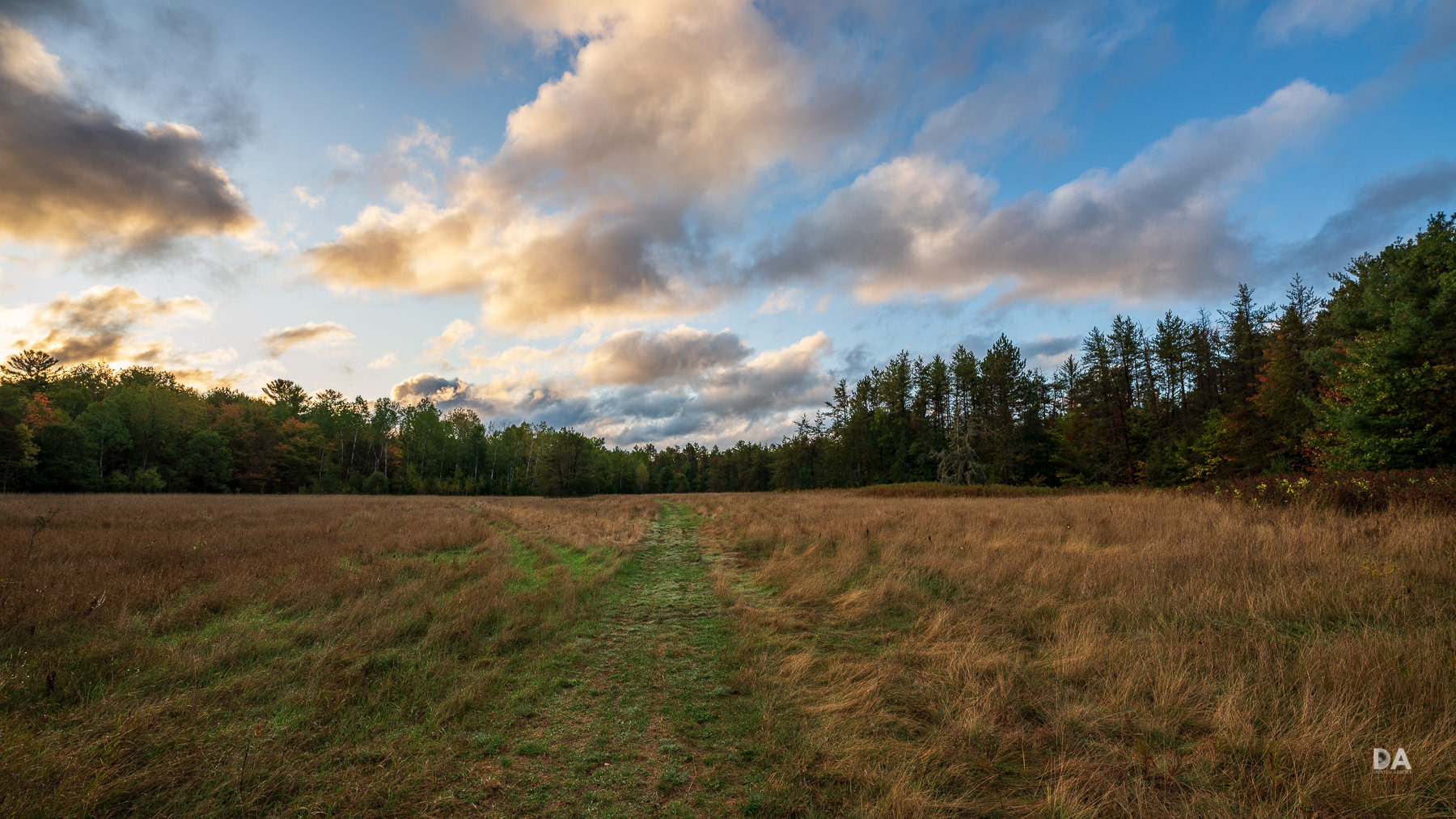

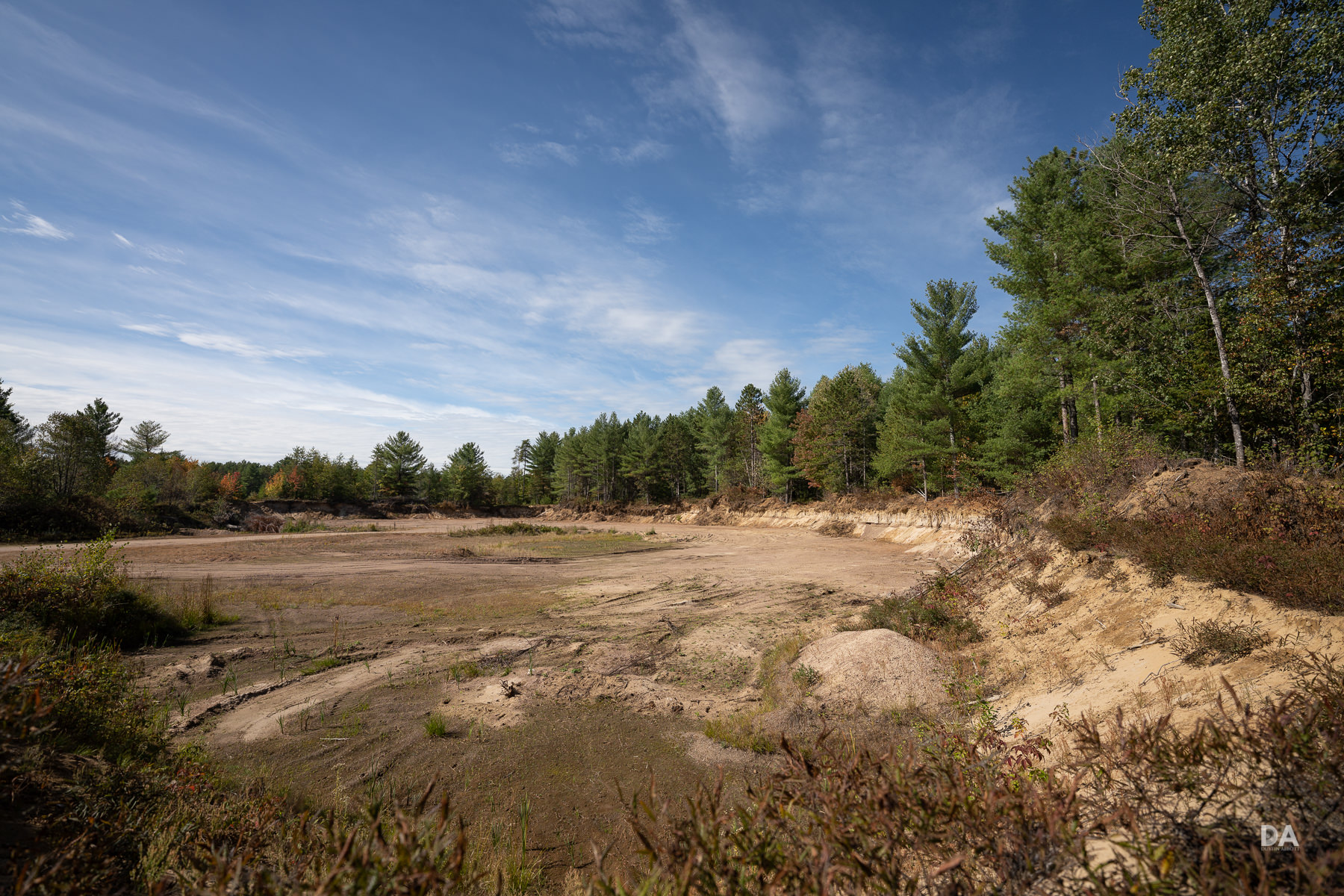



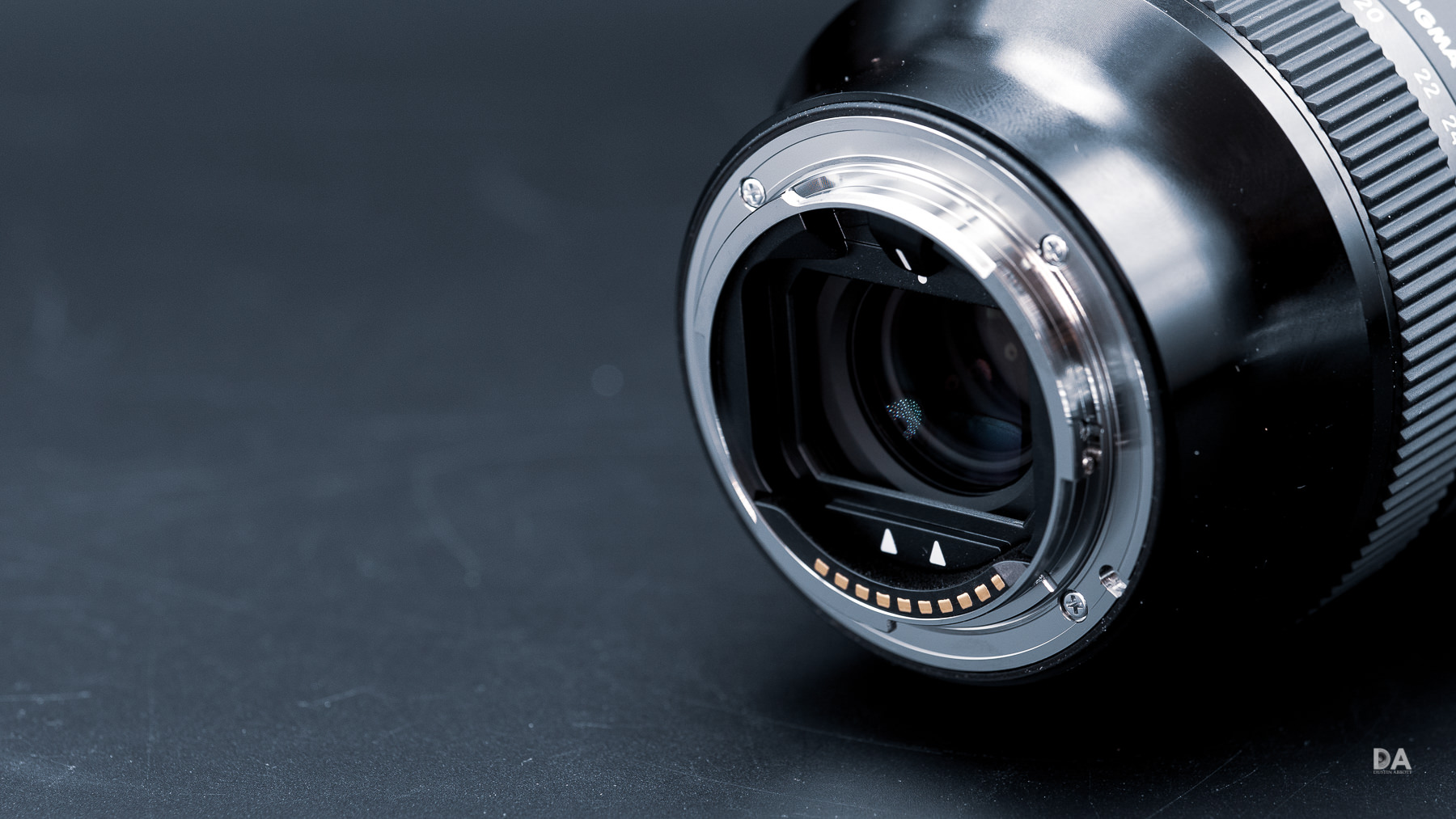


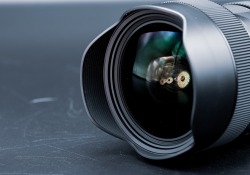
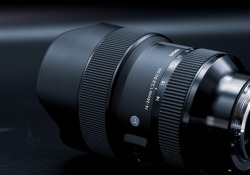
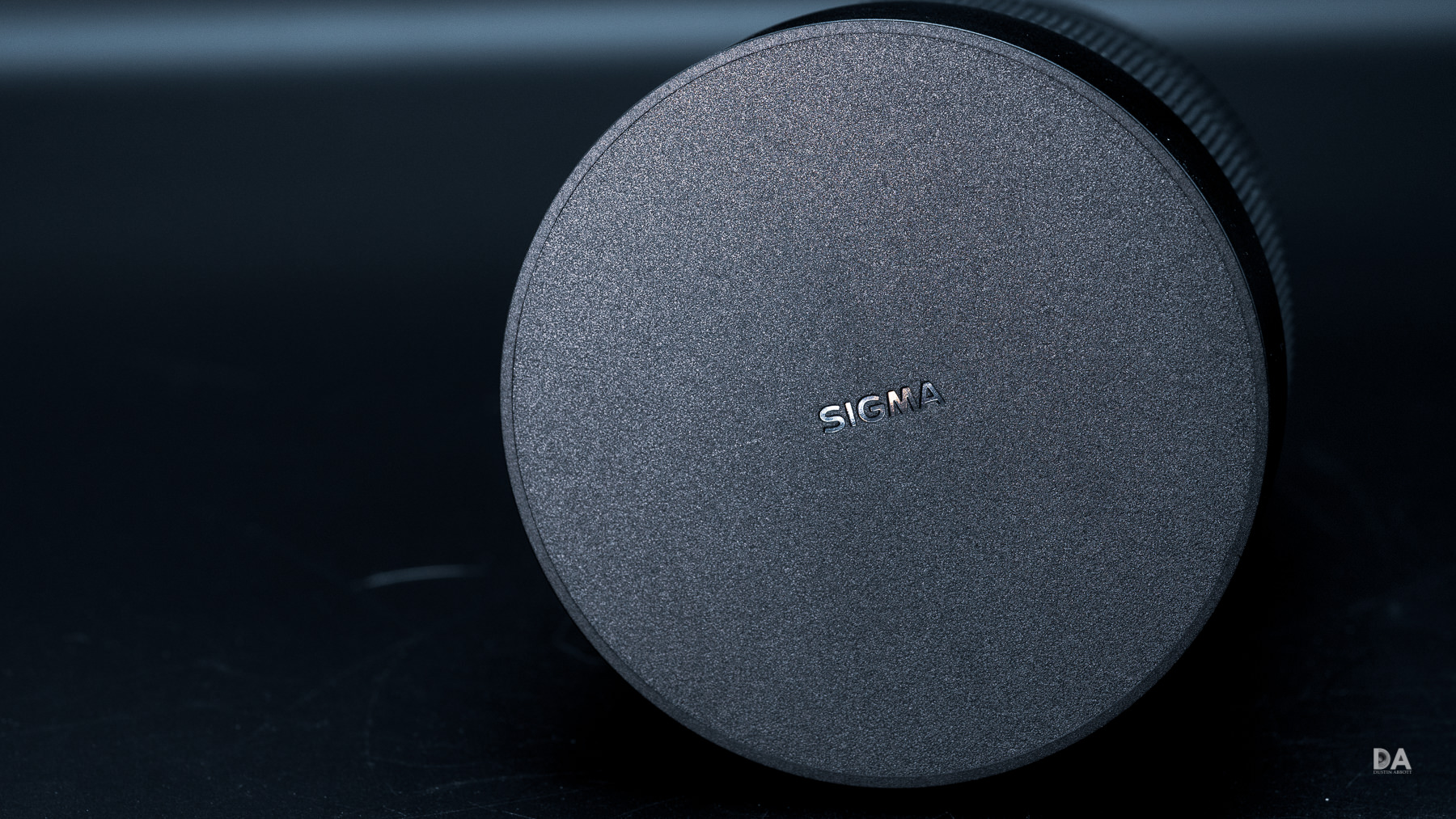





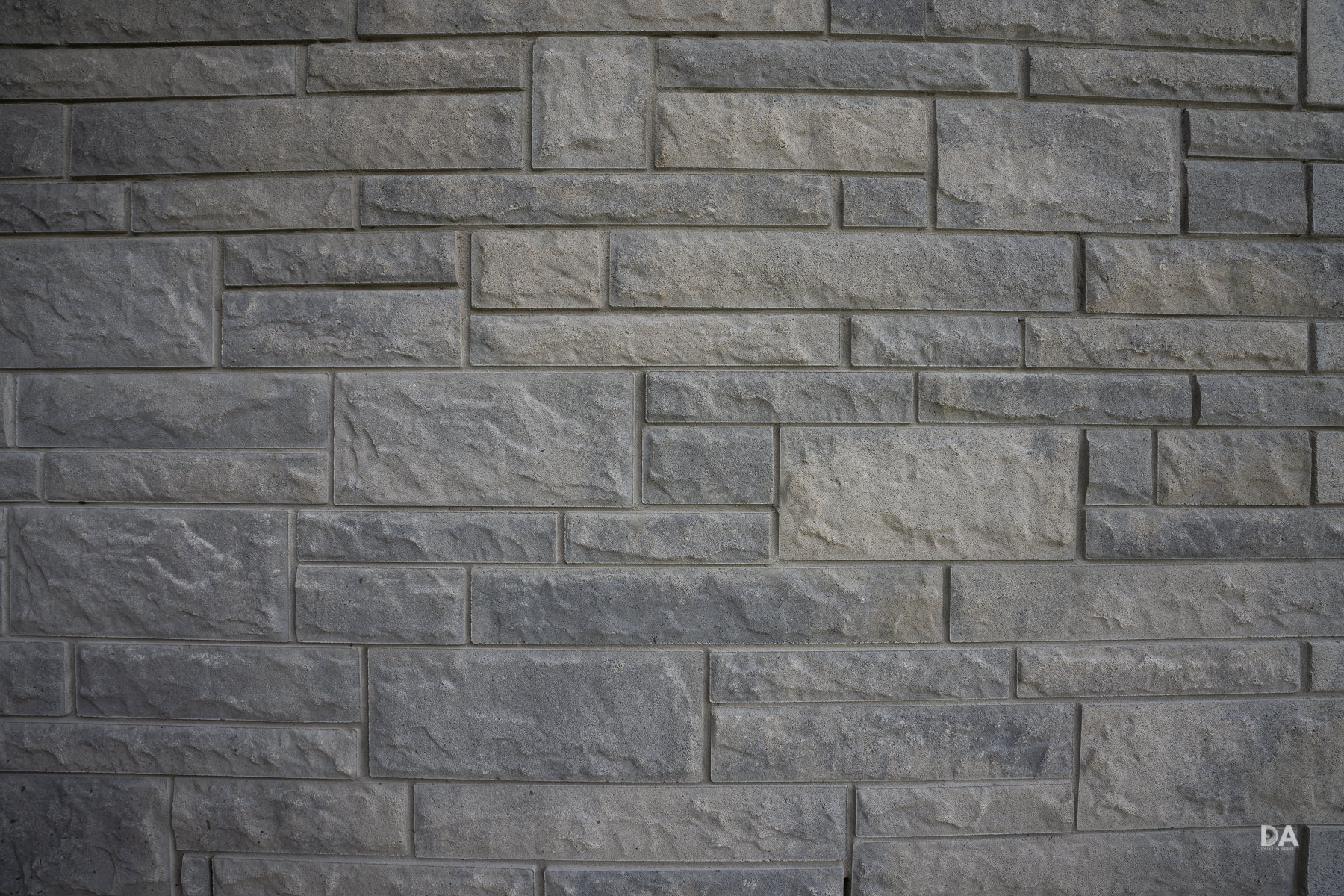
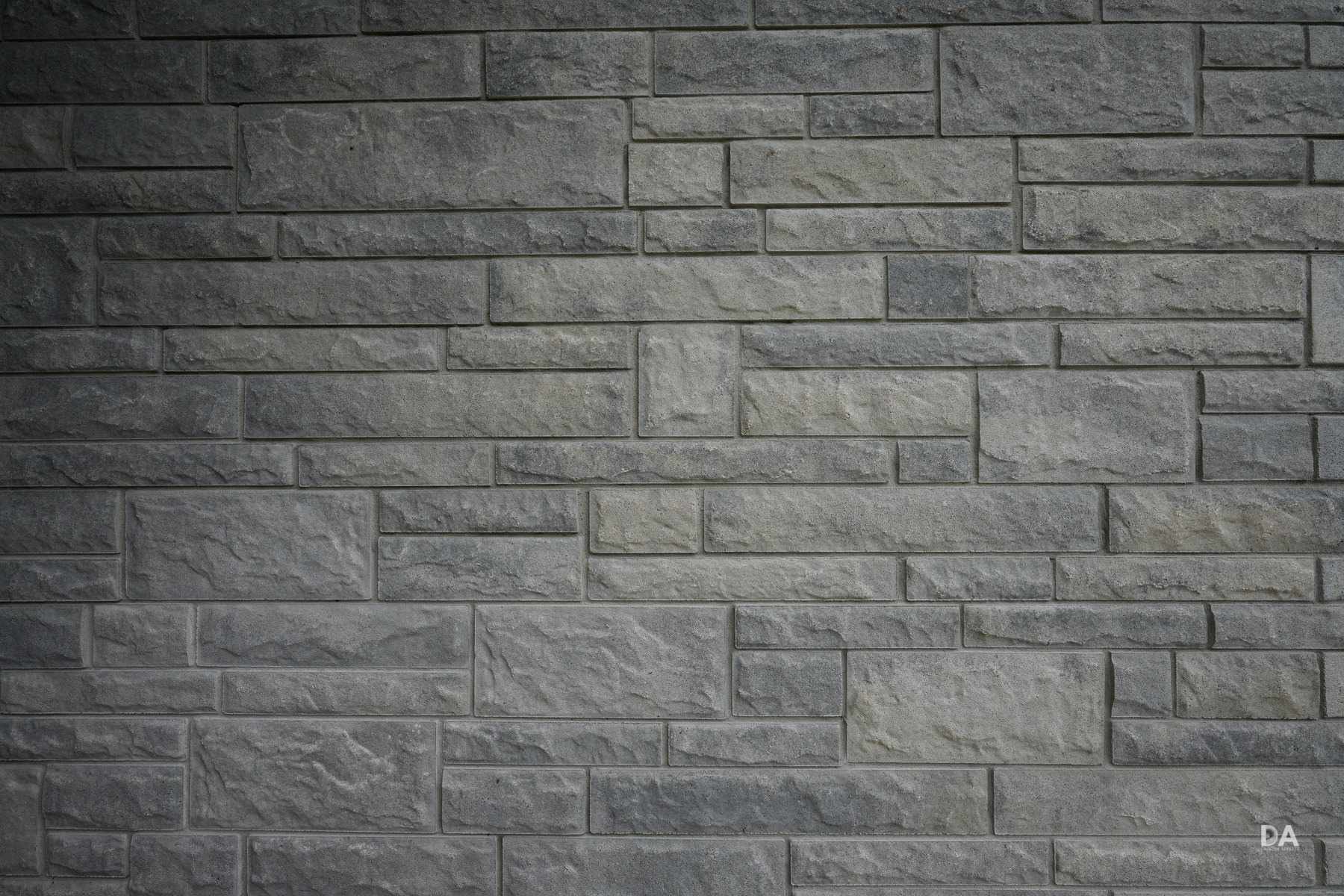


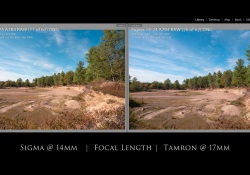
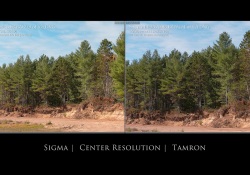
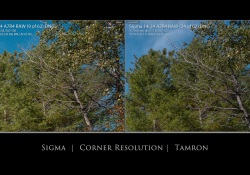
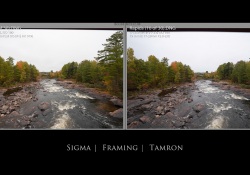

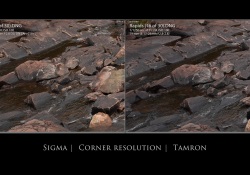




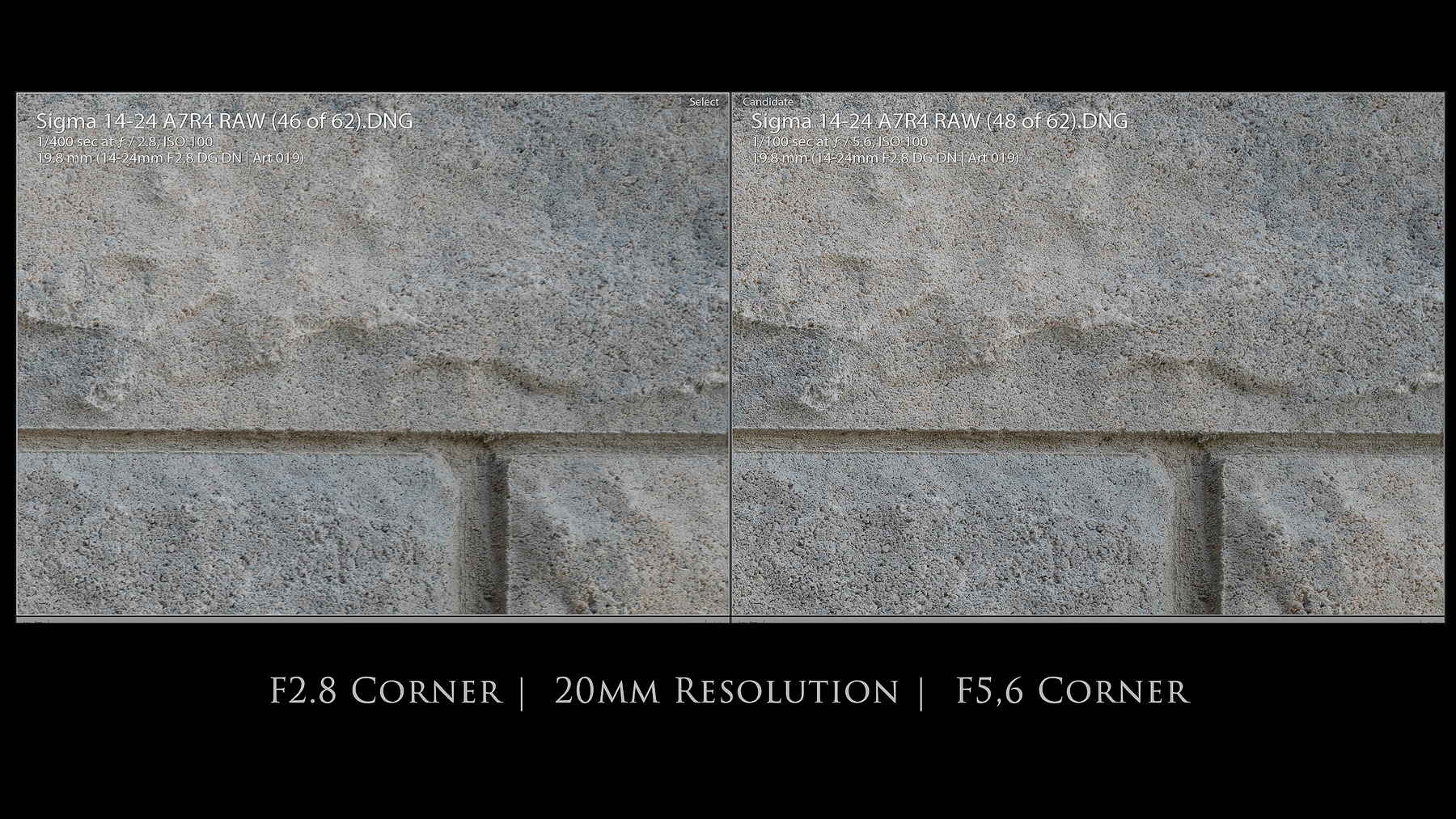
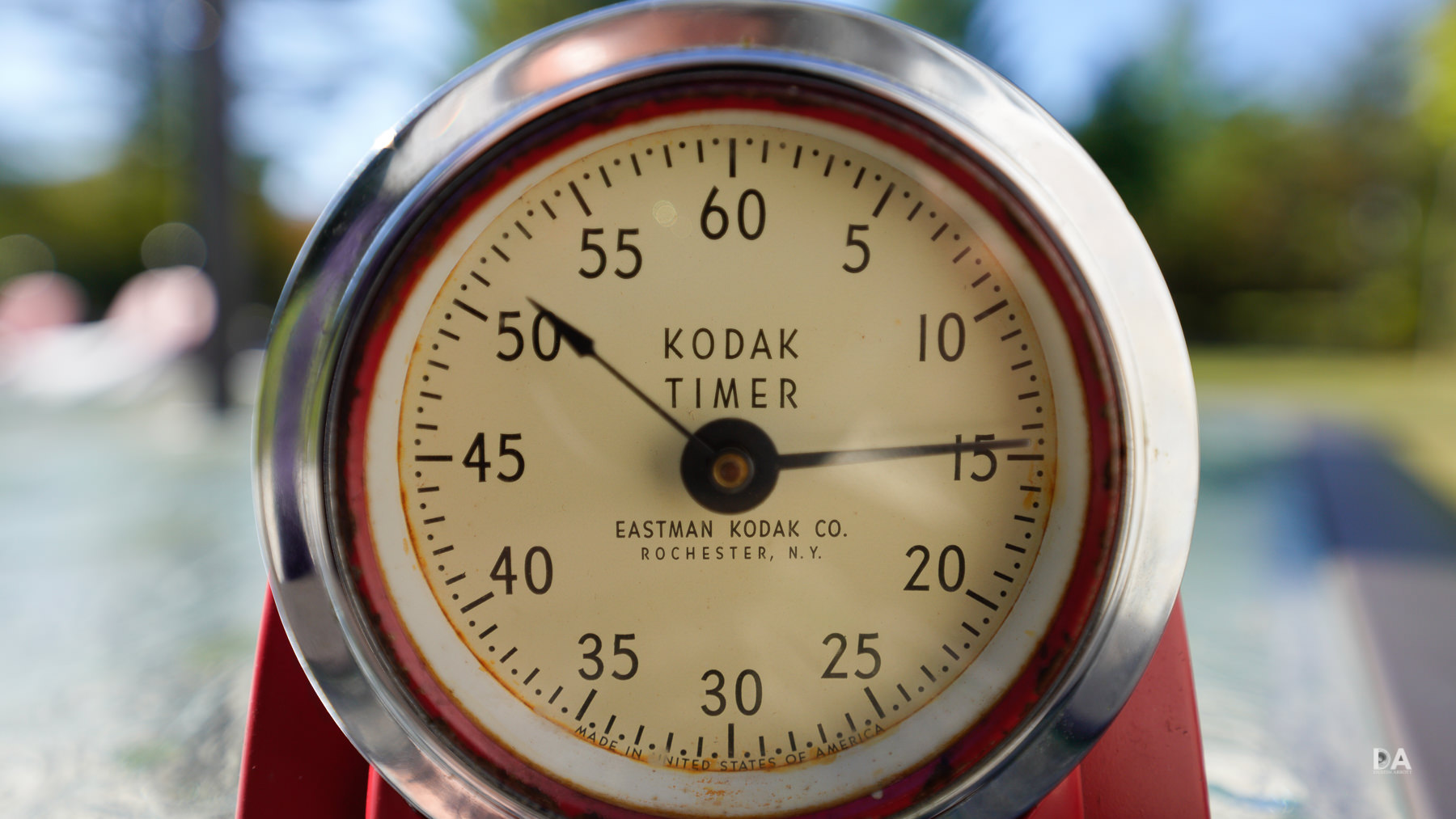



























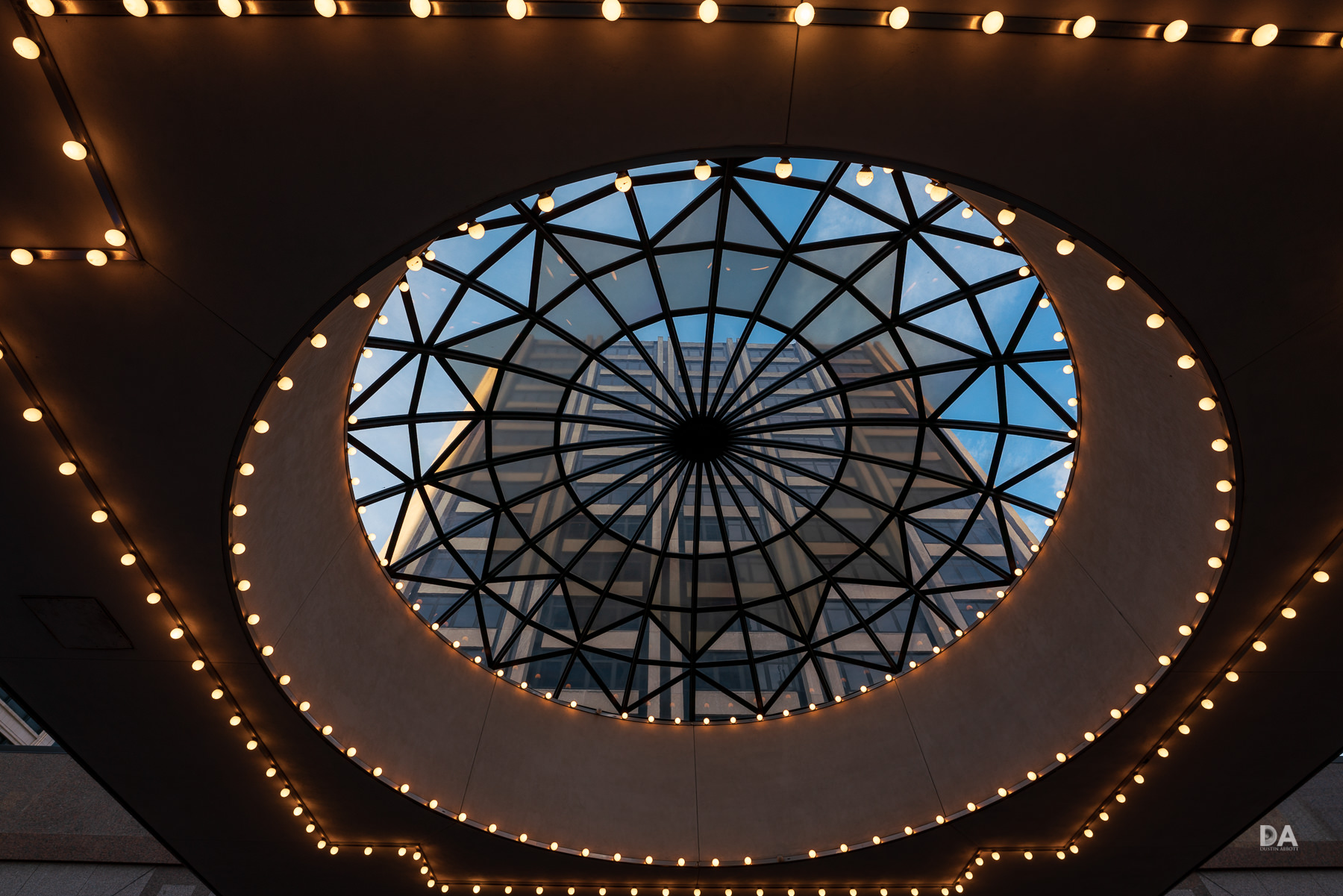




 Sirui Sniper 75mm F1.2 Review
Sirui Sniper 75mm F1.2 Review  Sirui Sniper 75mm F1.2 Gallery
Sirui Sniper 75mm F1.2 Gallery  Tamron 70-300mm F4.5-6.3 RXD Z-mount Review
Tamron 70-300mm F4.5-6.3 RXD Z-mount Review  Nikkor Z 40mm F2 Review
Nikkor Z 40mm F2 Review 